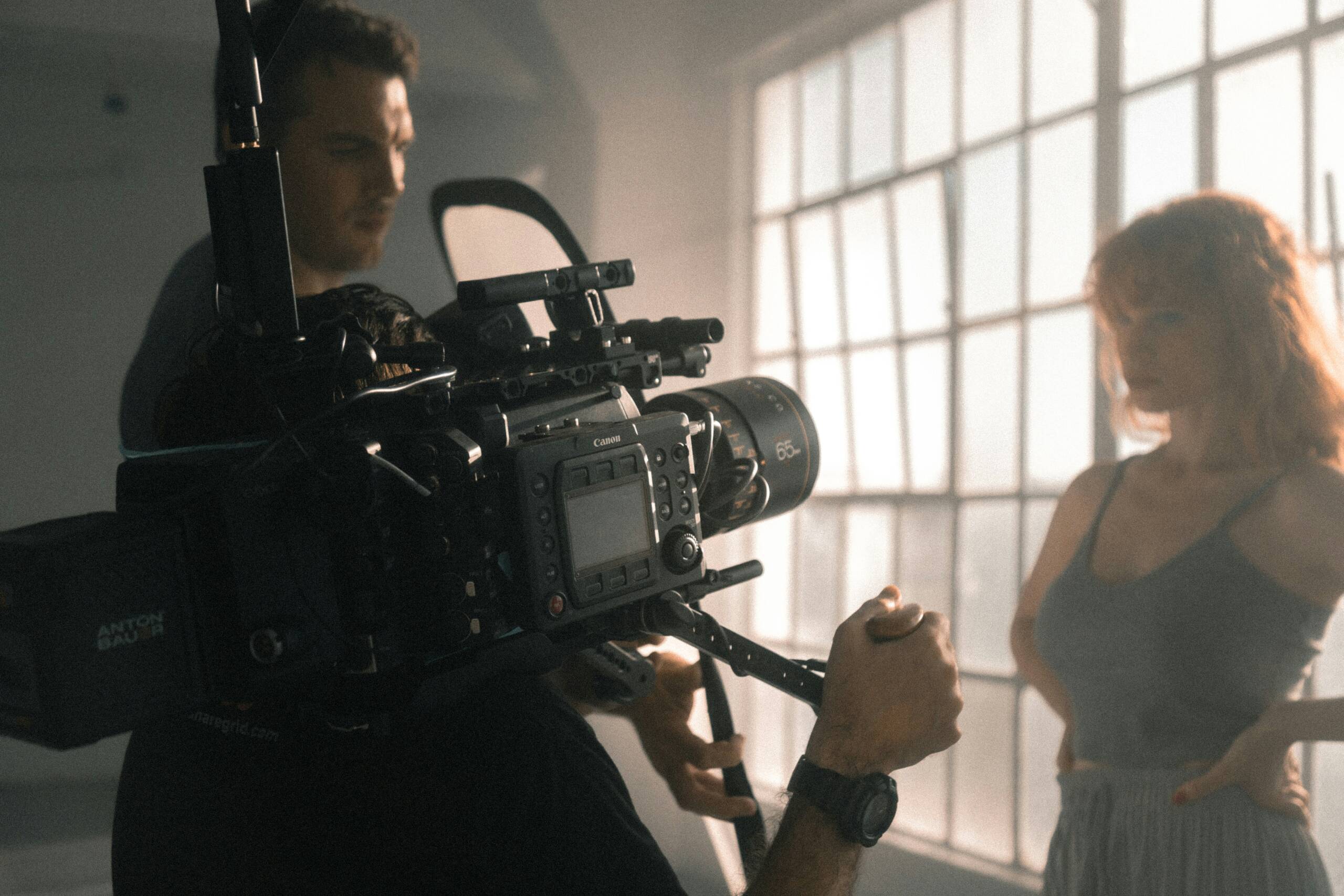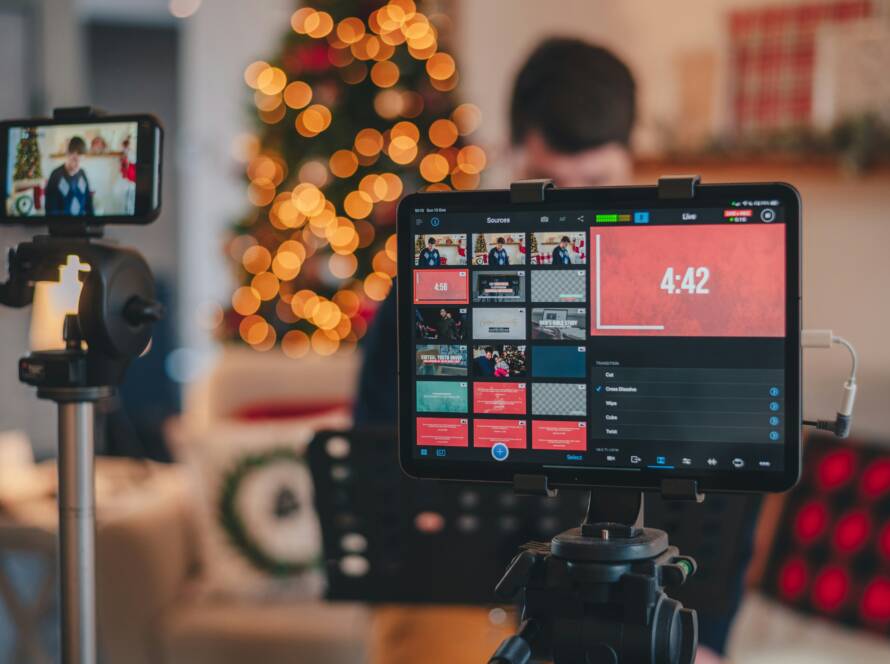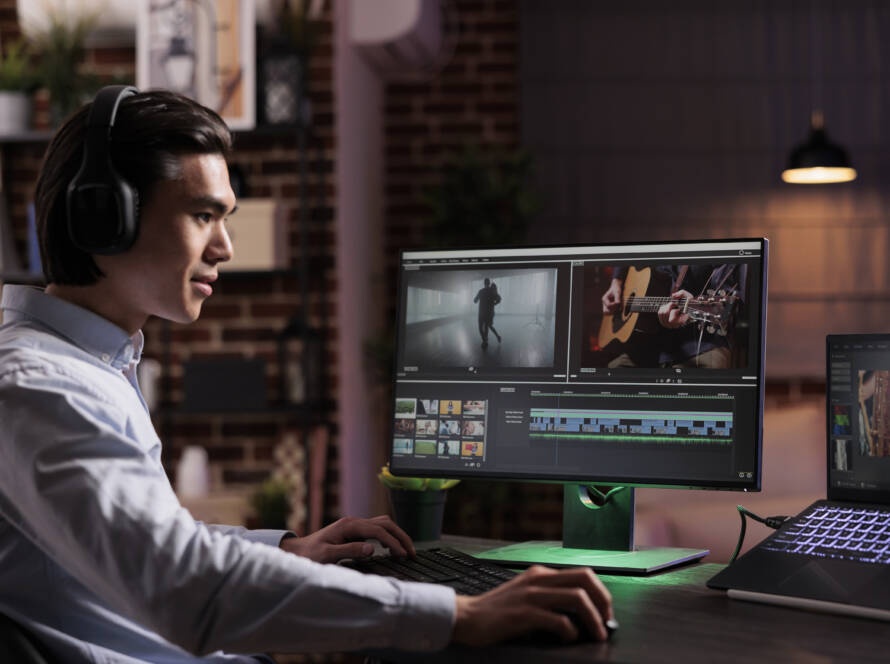There are a lot of factors involved in creating a good and engaging video, some of those are cinematography and video editing. There should be dynamics between the two elements and they should complement each other.
In this article one of our video editors will tell you why the dynamics between cinematography and video editing is important.
Table of Content
- What are videography and cinematography?
- How Cinematography Affects the Outcome of a Video
- The Process of Cinematography
- Getting the Right Cinematography Before Post-Production
- Technicalities of Cinematography
- Why Equipment Is Important for Cinematography
- The Relationship Between Cinematography and Video Editing
- FAQ
- What exactly are videography and cinematography?
- How does cinematography affect the outcome of a video?
- What is the usual process in cinematography?
- How crucial is getting the right cinematography before post-production?
- What are the technicalities involved in cinematography?
- How are cinematography and video editing connected?
- Doing the Cinematography and Outsourcing Video Editing
What are videography and cinematography?
Diving straight into it, let’s hash out these two power-packed terms – videography and cinematography! You might think they’re the same banana because both involve shooting videos, right? Well, not quite. Here’s the T: Videography is typically linked to smaller productions like documentaries, live events, short films, and commercials. The videographer is usually a Jack-of-all-trades handling everything from the camera, sound, and lighting to the nightmare that is organizing schedules.
On the other hand, cinematography is the big cheese when it comes to film production. Here we’re talking big-budget movies or TV shows, crafted with an artistic touch and you’d swear they’re selling popcorn just looking at them. While the videographer is a one-man circus, a cinematographer is part of a larger circus called a crew where each person handles a specific task. Cinematography is in part, explaining the script visually. That’s where you hear “making a cinematic video” come from.
So in the broccoli juice vs. green smoothie face-off, who wins? The answer is both. Like a good salad bowl, you need a mix. Whether it’s videography or cinematography, both have their unique appeal, their flavor in the storytelling stew. Remember, it’s all about creating that visual impact that makes your audience say “Let’s have a second helping of that!”
How Cinematography Affects the Outcome of a Video
The magic of cinematography is difficult to understate. On its surface, it’s probably most straightforward to think of it as “shooting the video.” But, oh buddy, it’s so much more than that. It involves camera techniques, lighting effects, and a slew of other elements that can really shape the aesthetics of a video.
Lights, camera, action! These three words sufficiently debunk the myth that cinematography is merely about handling the camera. Indeed, the way a cinematographer uses lighting can massively alter the aura of a scene. For example, minimalist lighting adds a touch of suspense, while extravagant lighting can induce an atmosphere of grandeur. So, as you can see, the cinematographer’s choices – right from the camera movement to the lighting – play a huge role in influencing a video’s overall charm and impact.
The Process of Cinematography
Diving into the world of cinematography is like opening a Pandora’s Box of artistic expression and technicality rolled into one package. Let’s say you’re a vlog content creator, capturing memories, experiences, or insights, the art of cinematograph helps stretch your creativity paired with mastering the science of videography. It all begins with the concept. What’s your story about? How do you want to impact your audience? Brainstorming your idea is the first milestone.
Next, we think about storyboard creation. Picture this – your big idea laid out in a series of comic strip-like panels, providing a bird’s eye view of your entire film. It sets the scene, highlights the action, and chalks out your narrative flow, helping to visualize the project before a single frame is shot. It might just be your secret weapon to create a rocking vlog that could be the next viral sensation on the Internet!
From there, the journey only gets more exciting, and hey, a sprinkle of madness doesn’t hurt, because as they say, you gotta be a little crazy to create magic on screen!
Getting the Right Cinematography Before Post-Production
Whether you’re a YouTuber, Instagram influencer, or Twitter pundit, you’ll know that content creation isn’t just about what takes place in front of the camera. It’s about polishing the raw footage and turning it into a masterpiece. This is where the role of the cinematographer comes into play like a good hand guiding a lens to capture the moments that count. Cinematographers can take an ordinary piece of footage and make it extraordinary with a few loved techniques like clever filming angles, jaw-dropping zoom-ins, and captivating time lapses.
As a content creator, it can be tempting to take on the whole production process alone. After all, you’re the one who knows your vision best, right? Sure, but there is a little secret – a good video editor. Before you jump into the world of post-production, knowing how a trusty video editor can elevate your content, is a game changer. They’re the guys who tweak and adjust the color, sound and trim the unnecessary parts to make your content crisp and engaging, without losing the essence of your original creation. They understand the nitty-gritty details like perfecting transitions and eliminations, ultimately ensuring your video flows seamlessly from start to finish. So, while you’re out there, creating and capturing your vision, let a video editor polish it up for you. After all, teamwork makes the dream work, right?
Here are a few things to consider when getting the right cinematography before going into post-production:
• Understand Your Vision: As the content creator, you need to have a clear understanding of what you want your final product to look like. This vision will guide every decision made during filming and post-production.
• Choose The Right Cinematographer: A skilled cinematographer can take an ordinary piece of footage and turn it into something extraordinary. They know how to use different filming techniques such as clever angles, zoom-ins, and time lapses to enhance your content.
• Collaborate With A Video Editor: While it may be tempting to handle everything yourself, having a good video editor on board is crucial. They can tweak colors, adjust sound levels, trim unnecessary parts, and ensure your video flows seamlessly from start to finish.
• Perfect Transitions And Eliminations: One of the nitty-gritty details that often gets overlooked in amateur productions is transitions between scenes or eliminations of unnecessary elements. These small touches can make all the difference in creating professional-looking content.
• Keep Original Essence Intact: Even with all these enhancements, it’s important not to lose sight of your original creation’s essence. The goal should always be enhancing what’s already there rather than completely transforming it into something else.
Remember – while being hands-on with every aspect might seem appealing at first glance; collaboration truly makes for better results! So don’t hesitate to seek help where needed – after all teamwork does indeed make dreams work!
Technicalities of Cinematography
Cinematography is a potent tool that commands the narrative perspective and establishes an emotional connection with the viewers. It’s not as simple as pointing and shooting the camera like some folks tend to think. Far from it! The tightly knit technical aspects of cinematography tie deeply into the post-production process. Each shot and frame has to be carefully thought out and executed with precision to yield the desired outcome.
Many technical parameters come into play in the world of cinematography. For instance, think about lighting and filters. You’d be surprised how these two seemingly simple elements can transform an average footage into a cinematic marvel, intensifying the mood of the scene. Then there’s the movement of the camera, the angles, and the focus; they all carry immense weight in how the final product will look and feel. And don’t even get me started on the intricacies of color grading in post-production – that’s an entire universe in itself. Oh, and remember, mastering these technical realms isn’t a walk in the park; it’s more like a thrilling rollercoaster ride. So buckle up and enjoy the ride, content creators!
Why Equipment Is Important for Cinematography
Filming a blockbuster movie or creating killer content isn’t just about having a great script or stunning actors, it’s also about having the right equipment. Lights, camera, action! These three words underscore the importance of equipment in cinematography. Without proper lighting equipment, the visuals might not be as impactful, while the absence of an appropriate camera can undermine the quality and beauty of each shot. And talking about ‘action,’ just imagine trying to create those adrenaline-pumping action scenes without the usage of cranes, dollies, or drones. Hilarious right?
Having the right equipment brings out the magic in every shot. Think about those buttery-smooth aerial shots you often admire; they are products of a state-of-the-art drone operated by a skilled pilot. What about those shockingly stable shots in shaky situations? thank the gimbal stabilizers for that. Low-light shots also have their heroes: high-quality lighting kits. The list of essential equipment for cinematography is quite extensive from microphones for crystal clear sound, rigs for better handling of cameras, to editing software for cutting and joining clips. They all come together to create that stunning visual storytelling that leaves viewers in awe. So, gear up filmmakers, the importance of having the right tools for the job can’t be overstated!
The Relationship Between Cinematography and Video Editing
When it comes to the enthralling world of video creation, both cinematography and video editing play crucial roles. These two art forms don’t exist in isolation; rather, they work in harmonious sync, strategically interwoven to produce visual masterpieces that attract millions of eyeballs. Just imagine light, sound, color, movement, all the elements carefully coordinated by a cinematographer, capturing the raw footage. Then it’s handed over to video editing wizards who take those raw cuts and shape them into coherent and engaging stories.
Take ‘Social Channel Studios’ as an instance. Their post-production marvels are seen in several successful content all around YouTube, Facebook, Instagram, and Twitter, receiving millions of views, comments, and shares. Every perfect cut, transition, or special effect, everything has been meticulously executed by their professional video editors. They understand this symbiotic dance between cinematography and video editing. It’s like the cinematographer paints a beautiful picture, and the video editor puts it in the perfect frame, enhancing and highlighting its beauty. Remember, it’s not just about producing visually appealing content; the right combination of cinematography and editing can significantly boost engagement levels and effectively convey the creator’s message.
Don’t forget to check out this video about how to successfully catch viewers’ attention and engagement with cinematography and professional video editing.
FAQ
What exactly are videography and cinematography?
Videography and cinematography are two critical elements in the film-making process. Videography is the process of capturing moving images on electronic media, while cinematography is more focused on the art and science of recording light either electronically or on film stock through the use of a camera.
How does cinematography affect the outcome of a video?
Cinematography significantly impacts the look and feel of a video. It uses aspects such as framing, light, composition, camera movement, and color to tell the story visually, thereby enhancing the viewer’s engagement with the content.
What is the usual process in cinematography?
The cinematography process usually involves pre-production planning, production, and post-production. During pre-production, the cinematographer collaborates with the director to understand the visual style needed. Production is where the actual filming happens, and post-production involves editing, adding special effects, color grading, etc.
How crucial is getting the right cinematography before post-production?
Getting the right cinematography before post-production is crucial as it sets the foundation for the final product. It ensures that the raw footage aligns with the director’s vision, which makes the editing and post-production process much smoother.
What are the technicalities involved in cinematography?
Cinematography involves several technical components like camera settings (ISO, shutter speed, aperture), lighting techniques, composition rules, and understanding the different types of camera movements and angles.
How are cinematography and video editing connected?
Cinematography and video editing are closely intertwined. The footage captured through cinematography sets the base for post-production editing. This includes color grading, adding effects, and editing the footage to tell the story effectively.
Doing the Cinematography and Outsourcing Video Editing
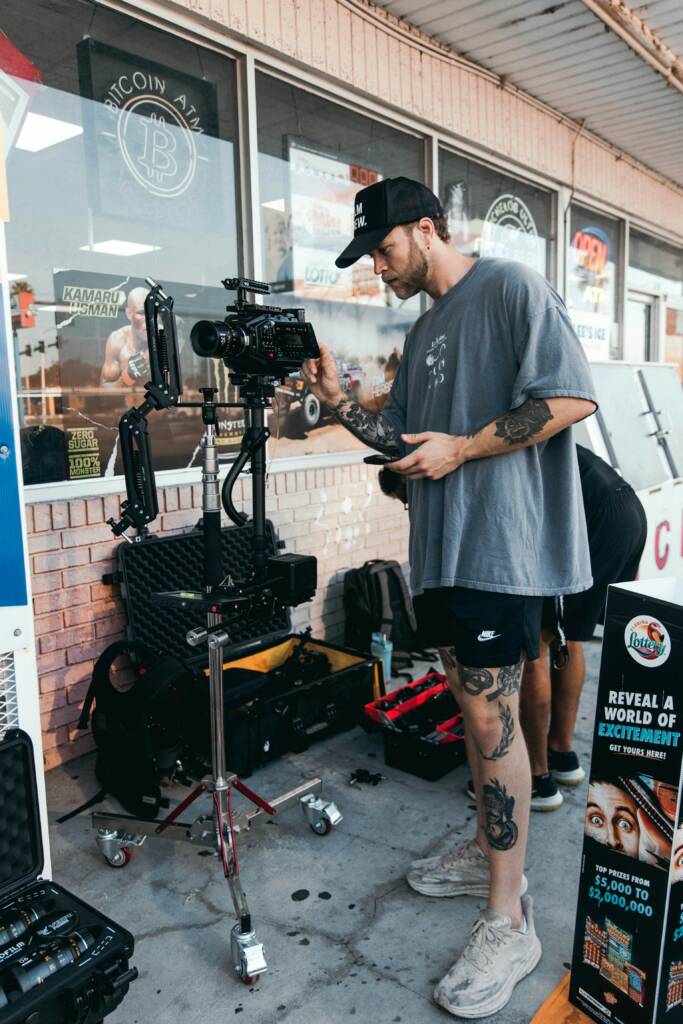
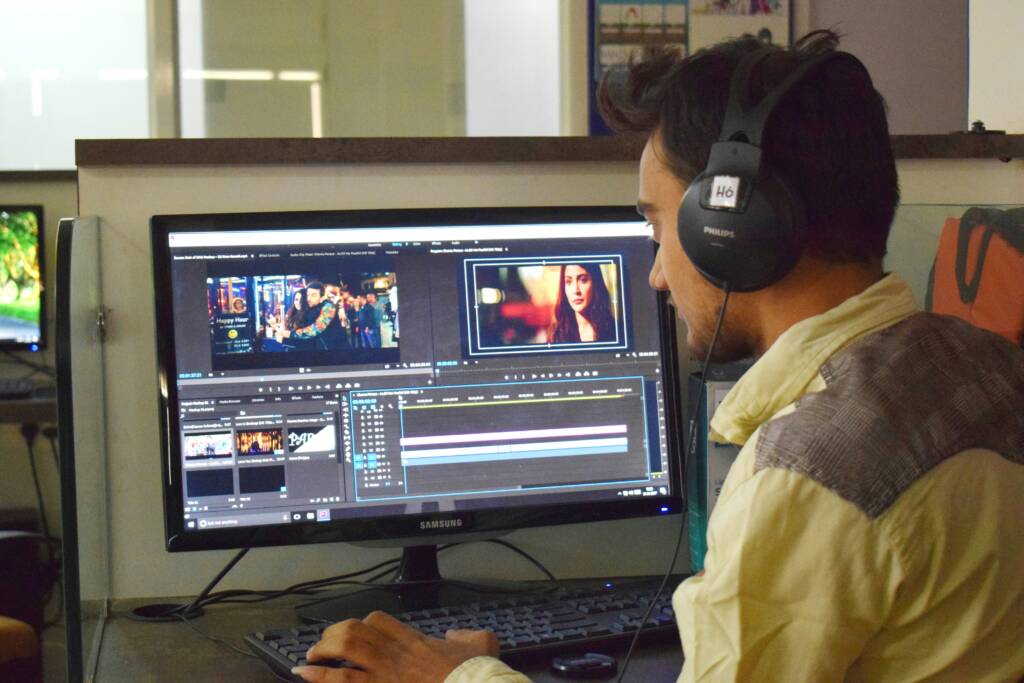
The art of cinematography is a unique skill set that requires both creativity and technical acumen. A lot of content creators have mastered this craft and are experts at setting the stage for their videos, capturing moments in the right light, just at the right angle, and with the perfect blend of motion. Yet, once this masterpiece has been created, another behemoth task awaits – video editing. This is where the frames are polished, scenes are stitched together, special effects are added, and the entire video is given a rhythm that aligns with the content creator’s vision and the audience’s expectations.
However, video editing, though every bit as important as cinematography, can often take a backseat, and there’s a good reason why. It is a time-consuming process that requires immense dedication and expertise, not to mention, it can be pretty exhausting too. So, many content creators – the smart ones, you may say – opt to outsource this task to professional studios like us, Social Channel Studios. You may wonder, isn’t it expensive? The truth, however, is that the benefits far outweigh the cost. When you outsource your video editing needs, you have more time to focus on your core strengths, be it scriptwriting, acting, dynamic cinematography, or something else. More so, you’ll have time to enjoy life, crank up your creative freedom, and maintain an amiable balance between your work and well-being. Moreover, with trained editors handling your content, there is an assurance of improved quality and efficiency that will ultimately help you reach and engage with a wider audience. So, in essence, by doing the cinematography and outsourcing video editing, you take your content from great to awesome without breaking a sweat!
If you are interested in hiring us or learning more about our services, please contact us today or book a free consult with one of our specialists. We look forward to working with you!
